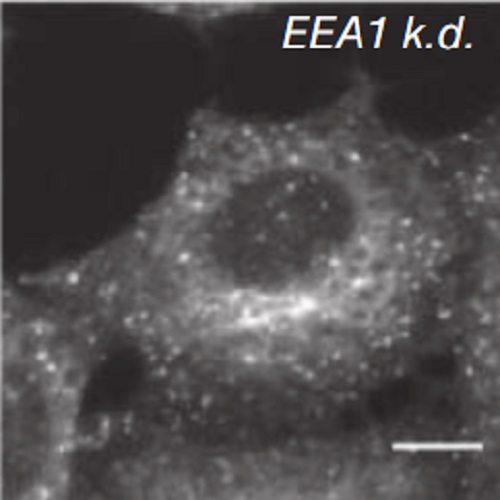Mammalian CORVET is required for fusion and conversion of distinct early endosome subpopulations.
Early endosomes are organized in a network of vesicles shaped by cycles of fusion, fission, and conversion to late endosomes. In yeast, endosome fusion and conversion are regulated, among others, by CORVET, a hexameric protein complex. In the mammalian endocytic system, distinct subpopulations of early endosomes labelled by the Rab5 effectors APPL1 and EEA1 are present. Here, the function of mammalian CORVET with respect to these endosomal subpopulations was investigated. Tgfbrap1 as CORVET-specific subunit and functional ortholog of Vps3p was identified, demonstrating that it is differentially distributed between APPL1 and EEA1 endosomes. Surprisingly, depletion of CORVET-specific subunits caused fragmentation of APPL1-positive endosomes but not EEA1 endosomes in vivo. These and in vitro data suggest that CORVET plays a role in endosome fusion independently of EEA1. Depletion of CORVET subunits caused accumulation of large EEA1 endosomes indicative of another role in the conversion of EEA1 endosomes into late endosomes. In addition, depletion of CORVET-specific subunits caused alterations in transport depending on both the type of cargo and the specific endosomal subpopulation. These results demonstrate that CORVET plays distinct roles at multiple stages in the mammalian endocytic pathway.

- Traffic 2014 Dec 06;15(12):1366-89
- 2014
- Cell Biology
- 25266290
- PubMed
Enabled by:
